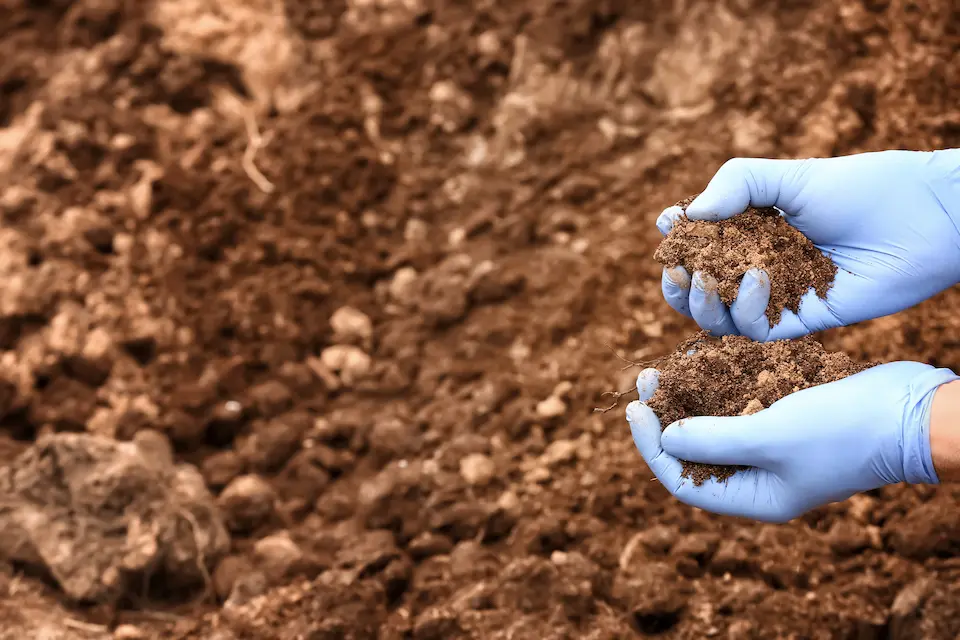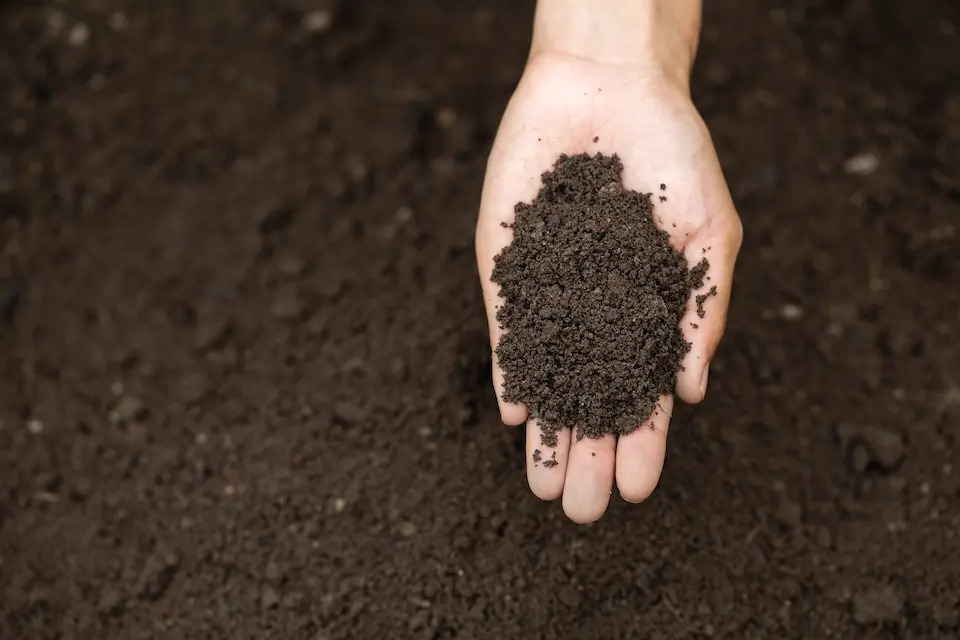Maintaining a lush, vibrant lawn is a goal shared by many homeowners, but achieving this feat requires more than just regular watering and mowing. Often overlooked but profoundly influential in lawn health is the soil beneath our feet. Understanding the composition and condition of the soil is paramount to cultivating a thriving lawn that withstands the tests of time and weather.

Our residential lawn care experts from FortSmith Landscaping are exploring the importance of soil testing and how this fundamental practice can revolutionize your approach to maintaining a beautiful outdoor space.
Understanding Soil Composition
Soil composition serves as the foundation upon which a healthy lawn thrives. Composed of various minerals, organic matter, water, and air, the soil is a complex ecosystem that directly influences the growth and development of plants, including the grass in your lawn and garden. To effectively care for your lawn, it’s essential to grasp the basics of soil composition and its impact on healthy plant growth.
Components of Soil
Soil is typically classified into three main components: sand, silt, and clay, often referred to as soil texture. Sand particles are the largest and provide good drainage but struggle to retain nutrients. Silt particles are smaller and offer moderate drainage and nutrient retention. Clay particles are the smallest and hold onto water and nutrients but can become compacted, leading to drainage issues.
Organic Matter
Organic matter in soil includes decomposed plant and animal material, such as leaves, grass clippings, and microorganisms. It contributes to soil structure, water retention, nutrient availability, and overall soil fertility. Soils rich in organic matter are often darker and crumbly, indicating a healthy ecosystem for plant growth.
Water and Air
Adequate soil drainage and aeration are crucial for maintaining a healthy lawn. Excess waterlogged soil can lead to root rot and other problems, while compacted soil restricts root growth and reduces oxygen availability. Balancing water and air in the soil is essential for promoting robust root development and nutrient uptake.
pH Levels
The soil pH scale measures the acidity or alkalinity of the soil and profoundly influences nutrient availability. Most plants, including grass, prefer slightly acidic soil to neutral soils with a pH range of 6.0 to 7.5. Outside of this range, certain nutrients may become unavailable to plants, leading to nutrient deficiency or toxicities.

Why a Lawn Soil Test is Essential
Soil testing serves as a cornerstone of effective lawn care management, offering invaluable insights into the health and fertility of your soil. While it may seem like a minor detail in the grand scheme of landscaping, the benefits of soil testing are far-reaching and can make a significant difference in the success of your lawn.
Identifying Nutrient Deficiencies or Excesses
Whether you collect soil samples to send a soil sample to a test lab or conduct a soil test kit, the results provide a comprehensive analysis of essential nutrients such as nitrogen, phosphorus, potassium, and micronutrients. By knowing the nutrient levels present in your soil, you can accurately tailor your fertilization practices to address any deficiencies or excesses.
This targeted approach to what your lawn or garden needs ensures that your lawn receives nutrients for optimal growth and vitality while minimizing unnecessary fertilizer application, which can be harmful to the environment.
Understanding pH Levels and Soil Acidity/Alkalinity
Soil pH significantly influences nutrient availability and microbial activity in the soil. An imbalanced pH level can inhibit nutrient uptake by plants, leading to stunted growth and poor overall health.
Soil testing allows you to assess the acidity or alkalinity of your soil and make informed decisions about pH adjustments through the addition of lime or sulfur. Maintaining the appropriate pH range promotes optimal nutrient uptake and fosters a hospitable environment for beneficial soil organisms.
Preventing Potential Lawn Problems
Many common lawn issues, such as yellowing grass, poor growth, or weed infestations, can be attributed to underlying soil imbalances. By conducting regular soil tests, you can proactively identify and address potential problems before they escalate.
Whether it’s adjusting nutrient levels, correcting pH imbalances, or improving soil structure, soil testing empowers you to take preemptive measures to maintain a healthy and resilient lawn.
Cost-Effectiveness of Targeted Fertilization and Soil Amendments
Applying fertilizers and soil amendments without a clear understanding of your soil’s nutrient status can be both wasteful and ineffective. Soil testing allows you to optimize your lawn care budget by focusing resources where they are needed most.

How to Conduct Soil Testing
Conducting soil testing is a straightforward yet crucial step in understanding the health and composition of your lawn’s soil. Whether you choose to perform a DIY test or enlist the help of a professional laboratory, proper soil testing procedures are essential for obtaining accurate results.
Determine the Testing Method
Before proceeding with soil testing, decide whether you’ll use a DIY soil testing kit or send samples to a professional laboratory. DIY soil test kits are readily available at garden centers and provide basic soil analysis, including pH levels and major nutrient concentrations. Professional laboratory testing offers more comprehensive results and may be necessary for in-depth soil analysis or specific soil management requirements.
Select Sampling Locations
Identify representative areas of your lawn, garden, or vegetable garden for soil sampling. Aim to collect samples from various locations, considering factors such as soil texture, drainage patterns, and lawn fertilization application history. Use a clean shovel or soil probe to collect samples at a consistent depth, typically 4-6 inches for lawns. Combine multiple soil cores from each sampling location to create a composite sample for testing.
Prepare Soil Samples
Remove any debris, rocks, or plant material from the soil samples, ensuring they are clean and free of contaminants. Air-dry the samples if they are excessively wet to prevent moisture-related issues during testing. Transfer the prepared soil samples into clean containers, such as plastic bags or soil testing boxes, and label them with corresponding sampling locations for accurate identification.
If you collected a soil sample to send to a professional lab tests, you would follow the procedure for that lab.
Follow Testing Kit Instructions
If using a DIY soil testing kit, carefully follow the manufacturer’s instructions for sample preparation and analysis. Most kits include simple procedures for testing pH levels and basic nutrient concentrations using reagent solutions and colorimetric methods. Ensure proper calibration of testing equipment and accurate interpretation of test results according to the provided guidelines.
Interpreting Soil Test Results
Interpreting soil test results is a crucial aspect of effective lawn care, as it provides valuable insights into the nutrient status and overall health of your soil.
Review Nutrient Levels
Soil test reports typically include measurements of essential nutrients such as nitrogen (N), phosphorus (P), potassium (K), calcium (Ca), magnesium (Mg), and micronutrients like iron (Fe), zinc (Zn), and manganese (Mn).
Pay close attention to nutrient concentrations and compare them to recommended ranges for your specific soil type and plant requirements.
Assess pH Levels
pH levels profoundly impact nutrient availability and plant growth. Soil test results will indicate whether your soil is acidic (pH < 7), neutral (pH = 7), or alkaline (pH > 7). Determine whether pH adjustments are necessary based on your lawn’s preferred pH range and the specific needs of the plants growing in your soil.
Identify Soil Imbalances or Deficiencies
Soil test results may reveal imbalances or deficiencies in essential nutrients, which can affect plant health and growth. Common deficiencies include nitrogen deficiency, indicated by low soil nitrogen levels and pale yellowing foliage, and phosphorus deficiency, characterized by poor root development and stunted growth. Address identified deficiencies through targeted fertilization or soil amendments.
Consult Recommended Actions
Soil test reports often recommend corrective actions based on the identified soil conditions. Follow the recommended guidelines for fertilization rates, pH adjustment, and soil amendments to address any deficiencies or imbalances effectively. Consider the timing and method of application recommended for each amendment to maximize its effectiveness.
Monitor Changes Over Time
Soil testing is not a one-time activity but rather an ongoing process to monitor changes in soil health and fertility over time. Regularly conduct soil tests, especially before each growing season, to track improvements and adjust management practices. Keep detailed records of test results and implemented actions for future reference.
Learn More About Professional Soil Testing in Wake County Today
Ready to take the guesswork out of lawn care and unlock the full potential of your soil? Don’t wait any longer—learn more about professional soil testing services in Wake County today. Our team of lawn care experts at FortSmith Landscaping is dedicated to helping you achieve a lush, healthy lawn through precise soil analysis and tailored recommendations.
Say goodbye to soil guesswork and hello to a vibrant, thriving landscape. Contact us now to schedule your professional soil test and take the first step towards lawn care success. Get started by calling us at (919) 228-8495 or filling out the form to the right.
